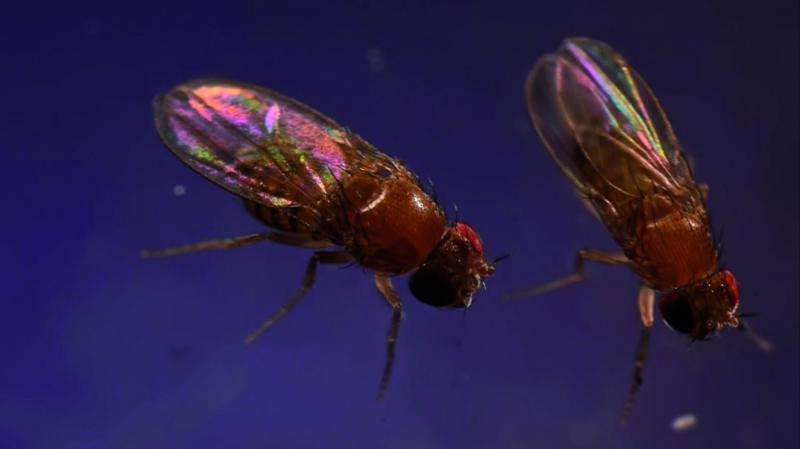DNA with self-interest: Transposable element conquers new strain of fly

Transposable elements are DNA sequences that are capable of changing their genome position by cut and paste or copy and paste through the enzyme transposase. This ability can be harmful for hosts if transposable elements destroy functioning genes, but it can also bring advantages. From an evolutionary point of view, transposable elements diversify the genome and open up chances for adaptation.
Transposable elements are also called selfish DNA parasites because they spread through their hosts, such as humans, animals, plants as well as bacteria and, thus, provide for their own survival.Robert Kofler from the Institute of Population Genetics at the Vetmeduni Vienna analysed flies from all over the world. He discovered a phenomenon which was thought to be very rare. Kofler found a transposable element in the fly species Drosophila simulans, the so-called P-element. This transposable element has been absent in D. simulans until recent years.
"The P-element has been spreading rapidly in D. simulans within the past five years. It probably invaded the species via horizontal gene transfer. When exactly the transfer happened, is not clear", says lead author Kofler.
The DNA sequence was not inherited but directly transferred from one organism to another. "This happened to Drosophila melanogaster more than 60 years ago. The P-element was discovered twice in a new species within one hundred years. Therefore we can assume that transposable elements are transferred across the species faster than we thought."
A transposable element conquers the world
Although scientists found the P-element in D. simulans flies from South Africa as well as from the USA, they assume that there was only one single transfer event. On average, the South African flies had more P-elements in their genome than flies from Florida. "This indicates that the flies from Florida, collected in 2010, were in an early stage after the transfer event. The samples from South Africa are from 2012. The P-element significantly multiplied within these two years", Kofler concludes.
High-speed evolution in the lab
Head of the institute, Christian Schlötterer, and his team perform high-speed evolution in the lab. They expose fruit flies to extreme conditions such as heat, cold or UV radiation. Before and after the exposure, they sequence the flies' genomes. The evolve-and-resequence approach makes it possible to identify genes that have been selected through generations. The researchers now want to study the spread of the P-element under such conditions.
"The discovery of the P-element in Drosophila simulans offers the unique possibility to investigate the way transposable elements are regulated and how they survive. We can accelerate evolution in the lab and, thus, answer this and other questions", Schlötterer explains.
More information: "The recent invasion of Drosophila simulans by the P-element", by Robert Kofler, Tom Hill, Viola Nolte, Andrea Betancourt, and Christian Schlötterer, PNAS. doi: dx.doi.org/10.1101/013722
Journal information: Proceedings of the National Academy of Sciences
Provided by University of Veterinary Medicine—Vienna


















